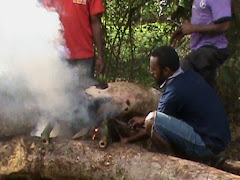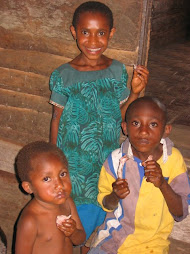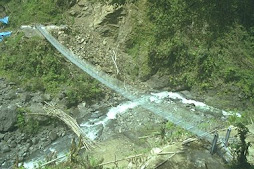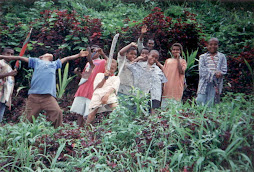The Real History of the Mesem New Testament: Yanga and Yohanuc
The first great obstacle to translation was not the attacks or the illnesses. Yes, they were hassles. Our obstacle was we had no one who would work with us. The village elders assigned a group of men and all left the village within the first week. We kept praying and asking people to work with us, but every day it seemed was spent doing medical work, lending tools, fixing something for someone and suriving. Translation seemed it would never begin.
Joyce Turner organized friends to fast and pray.
One Saturday a man we had not met before came to our door and asked, “Do you believe in binding spirits in Jesus Name?”. We invited him to eat with us.
His name was Yanga Tumbe and he had returned to the area 2 years prior to share the gospel after coming to faith. He felt he had no one listening and prayed about what to do. The Lord told him to come and talk to us. That night Yanga explained a dynamic of Mesem spiritual beliefs about which we knew nothing: the Mesem had a strong allegience to a spirit named “sankumtulung” (we don't capitilize their names purposefully). They believed that if they honoured this spirit's name, and treated him well with offerings, he would look after them. Saying his name aloud was disrespectful, which explained why we had not heard the name before. The people used euphamisms to refer to him. That night the three of us agreed in prayer to bind sankumtulung.
The next day Yohanuc Wenge, who we had asked to assist on several occassions said, “Let's work together”. In a way that only God could have forseen the man who brough the gospel to the Mesem was also instrumental in beginnings of the translation of the Word of God for the Mesem people.
Subscribe to:
Post Comments (Atom)
















.jpg)


No comments:
Post a Comment